Domesticated chickens make great pets for urban homesteaders and rural hobbyists alike.
This burgeoning backyard flock comes complete with a surplus of commercial chicken coop designs – many interesting and hip.
From modest DIY backyard rigs to urbane coop concepts, the following is a list of original suggestions postcreated to enrich the life, and life-style, of your fluffy mates.
1. The High-Rise Henhouse
Short on square footage but not on style? Go vertical!
A chicken coop like this makes the most of the space you have, with ramps and perches providing the chickens with the need to roost that they would otherwise have when living outside.
Make sure that there’s access to each level for cleaning and maintenance, and that it’s well-ventilated.
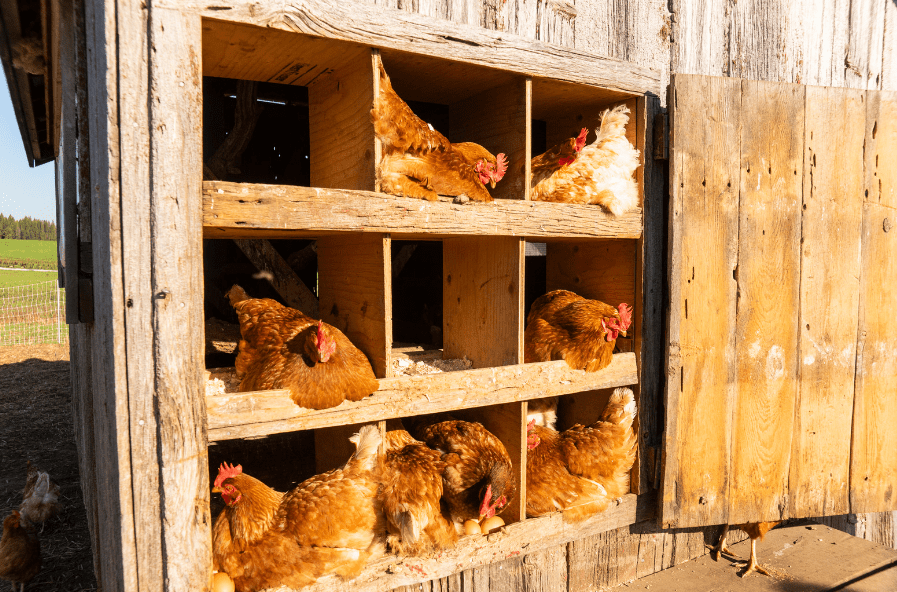
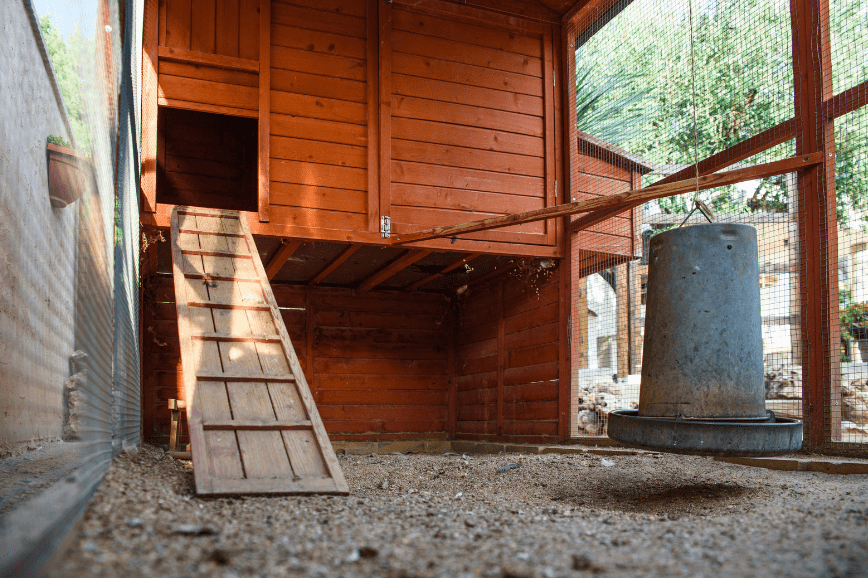
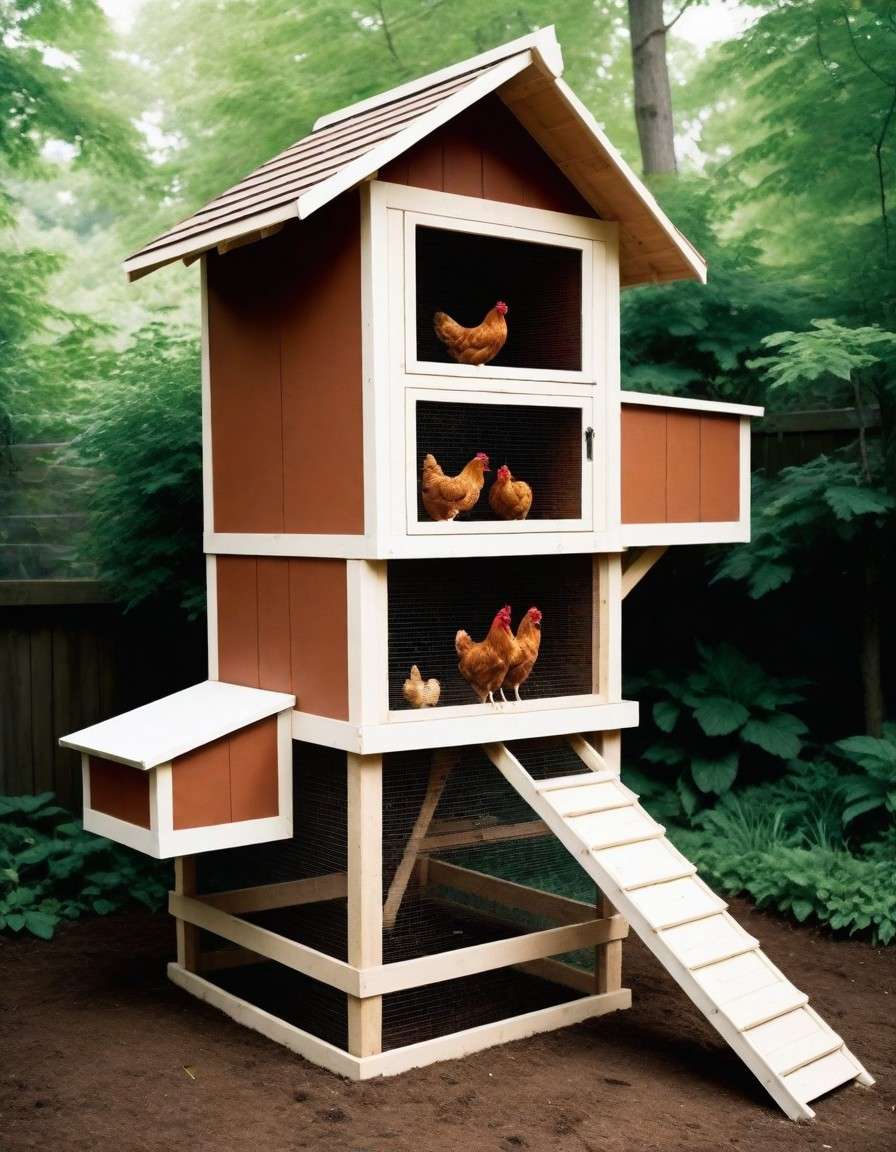
2. The Classic Cottage Coop
Charm and functionality merge in this timeless design.
A classic cottage-style chicken run or coop not only looks lovely in any backyard but also provides ample space for a small flock.
Choose soft, neutral colors for a cozy feel, and add window boxes with herbs to freshen the air inside.
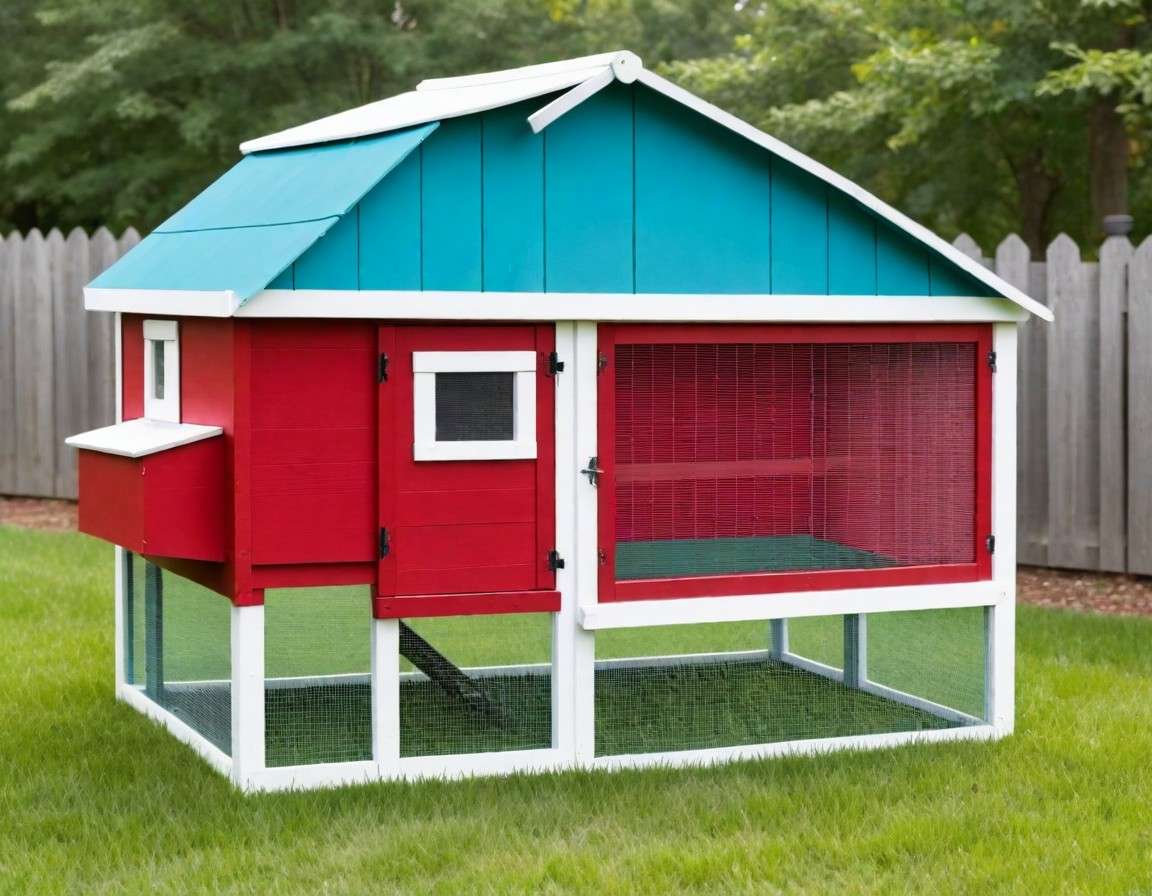
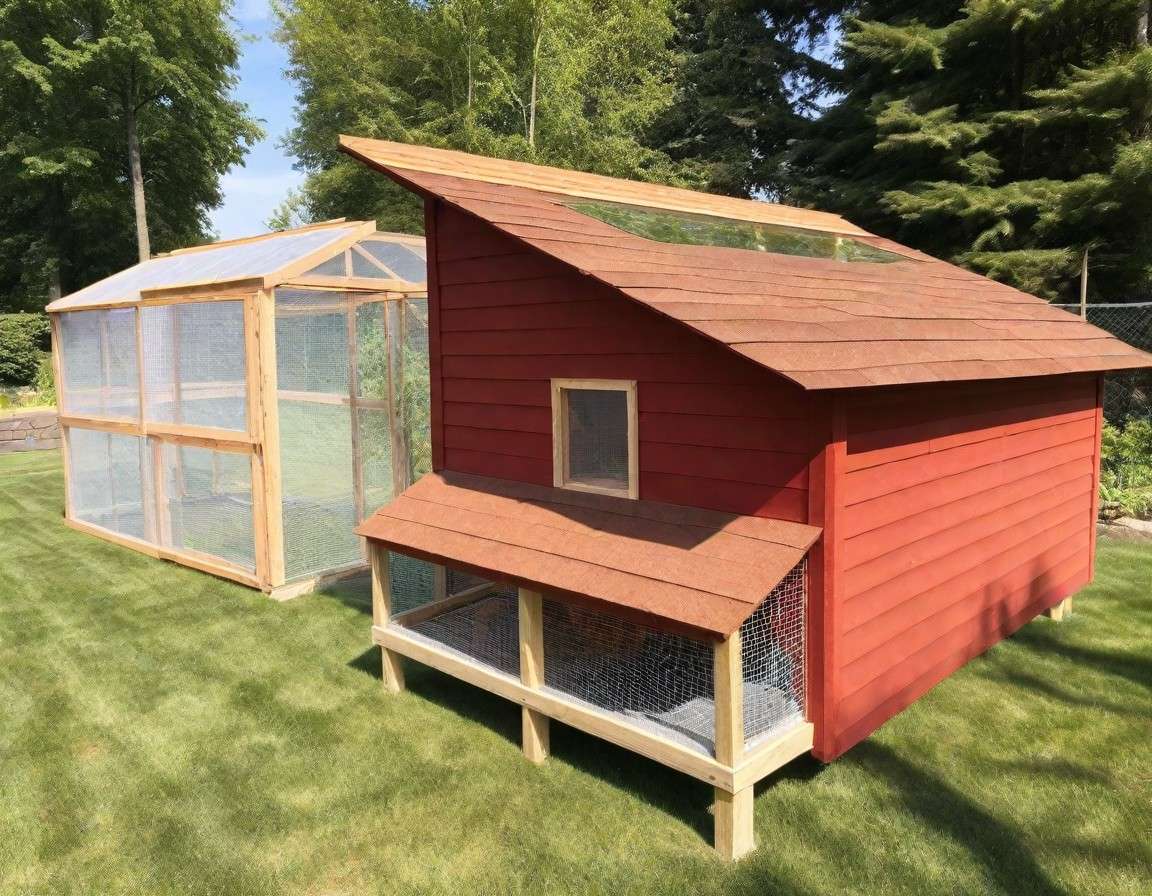
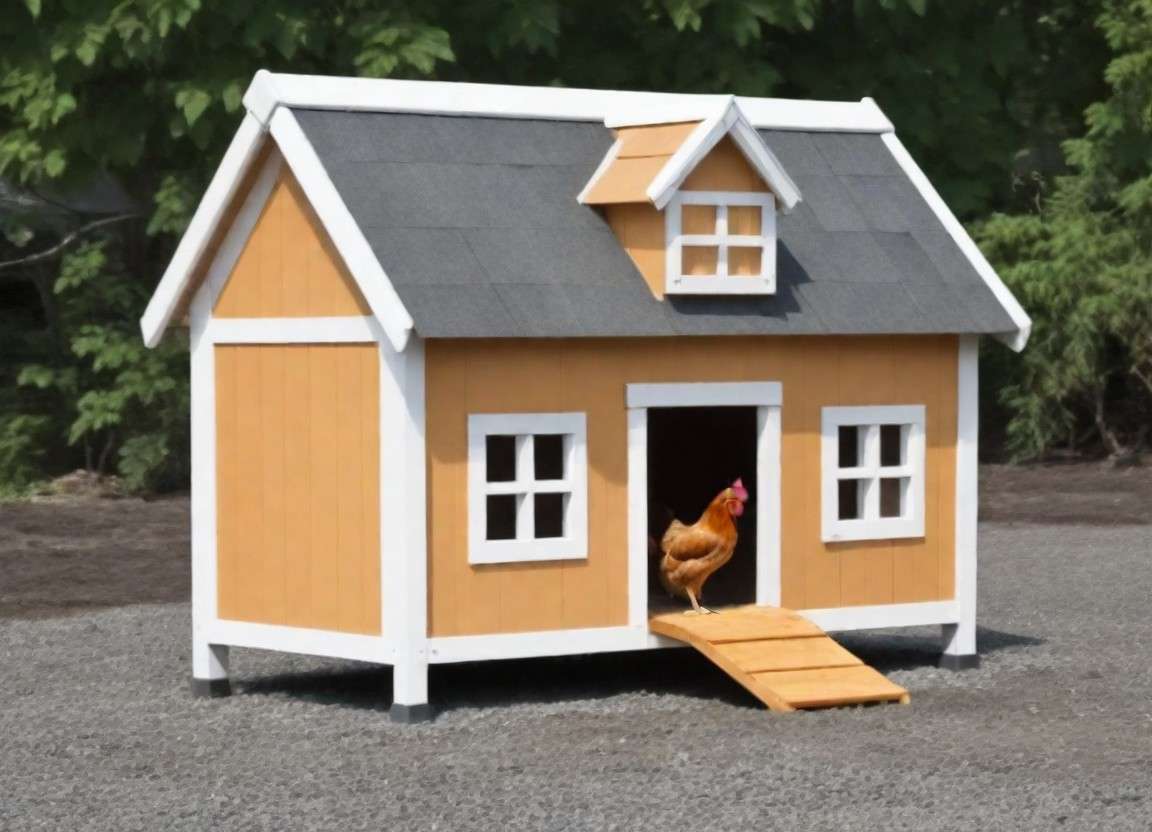
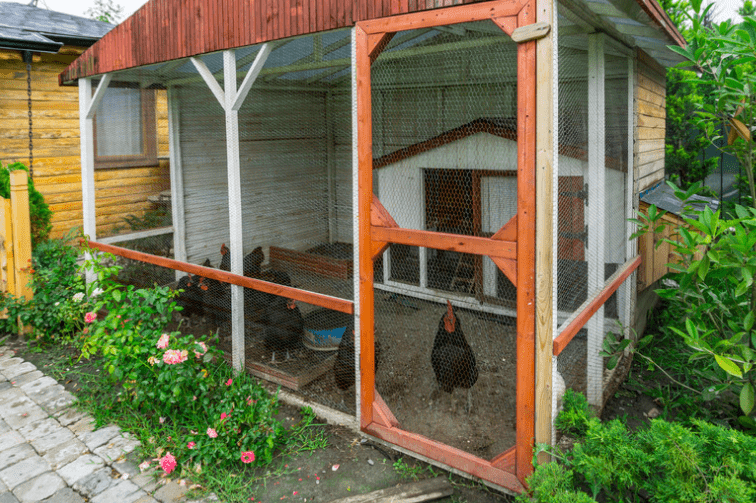
3. The Freewheeling Frame
You can build a small frame covered in chicken wire for your chickens to be in during the day when you want them to be free-ranging; at night it will keep them protected, while giving them access to grass and sunshine.
It’s a cost-effective solution that works well in urban and suburban settings.
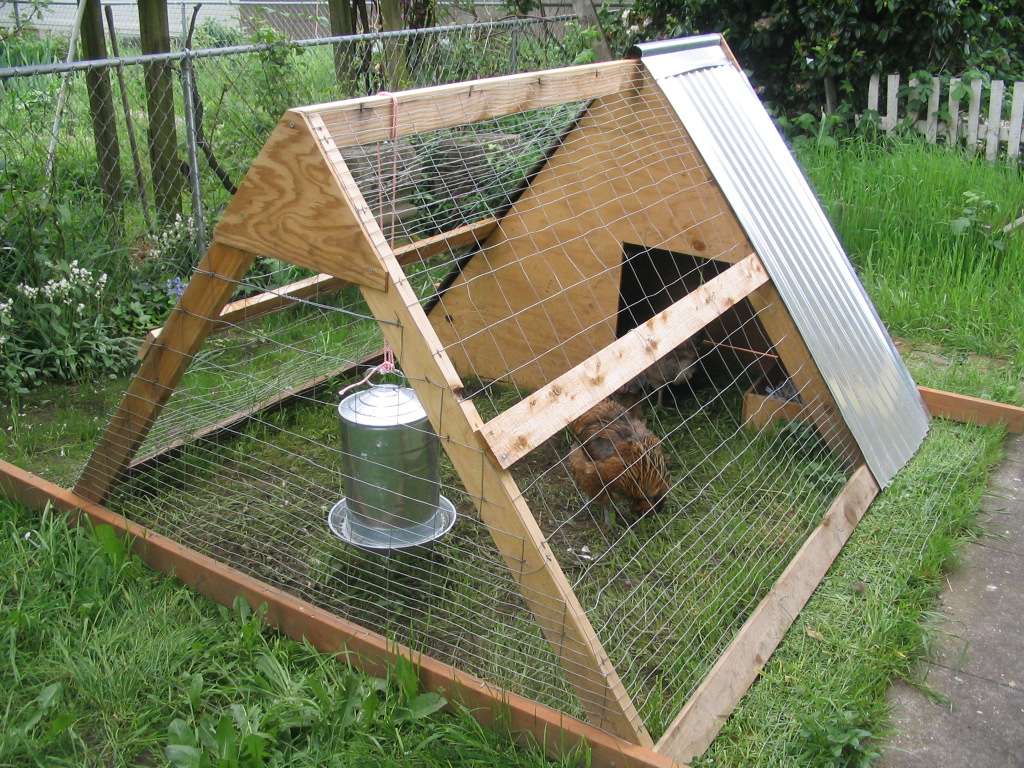
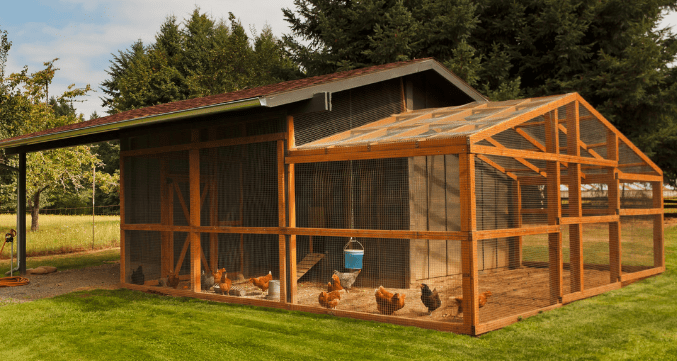
4. The Urban Aviary
The urban aviary represent the most sophisticated backyard system for the green-thumbed or feather-loving city person.
The charming build cleverly combines a chicken coop with a planter box so that no inch is wasted in the pursuit of homegrown food and fresh eggs for a true table-to-farm experience.
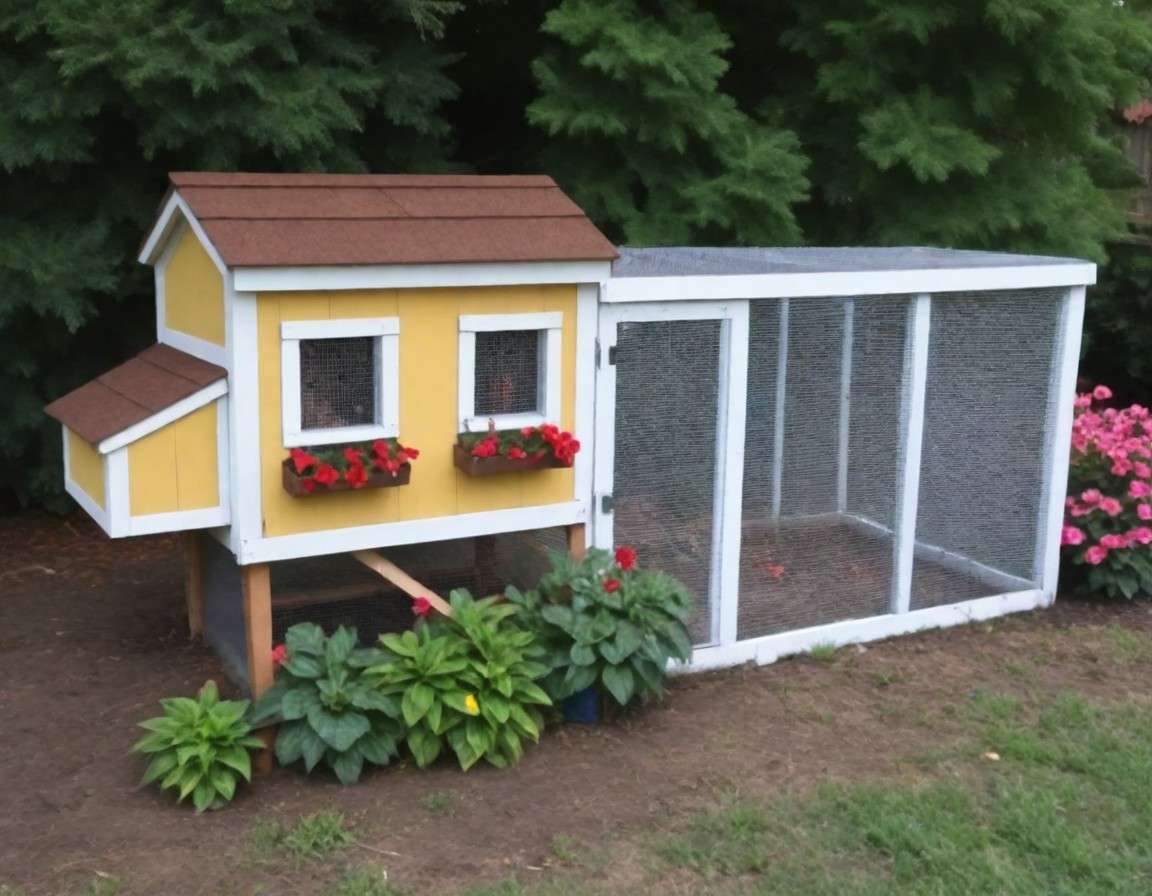
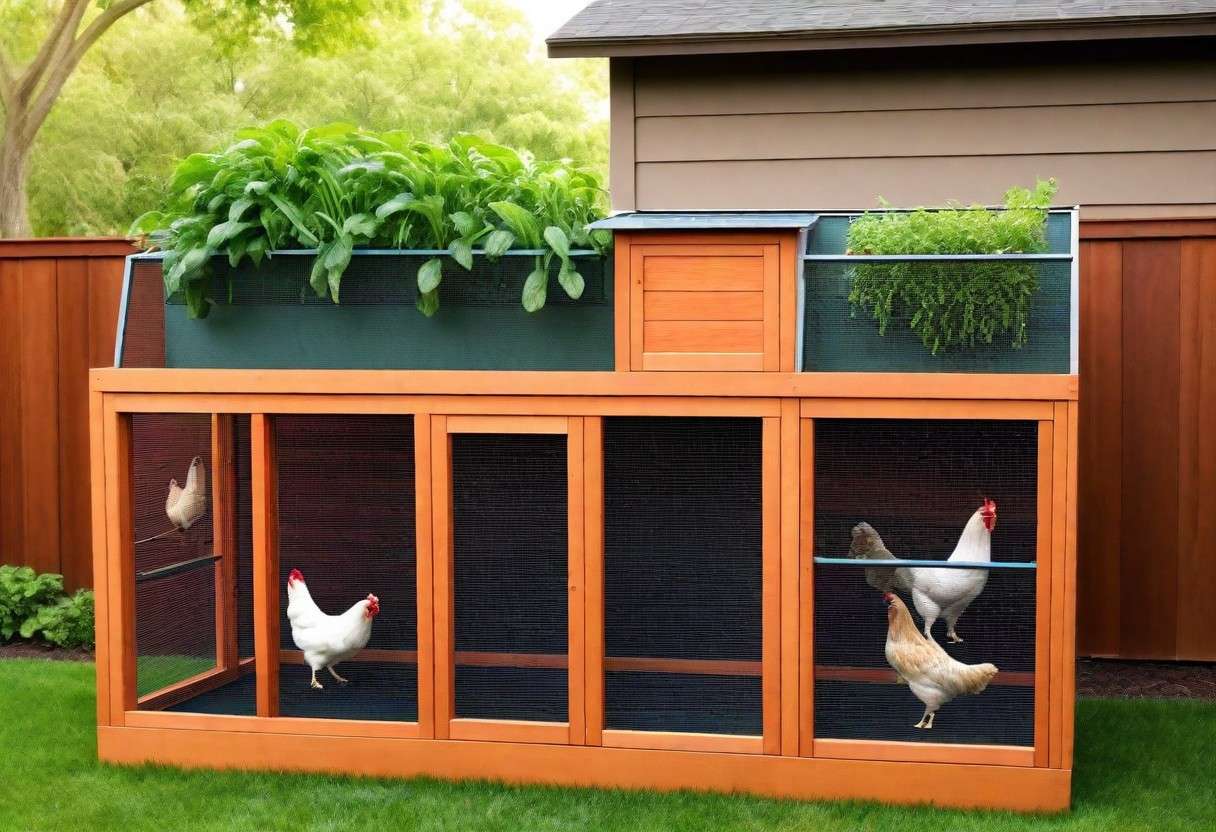
5. The Playful Pallet Palace
Pallets serve as adaptable resources for crafting a coop that exudes a rustic charm.
Paint the wood according to your garden’s theme or create a snug, hygge caravan inside, with cosy bedding for the chickens’ nightly roost.
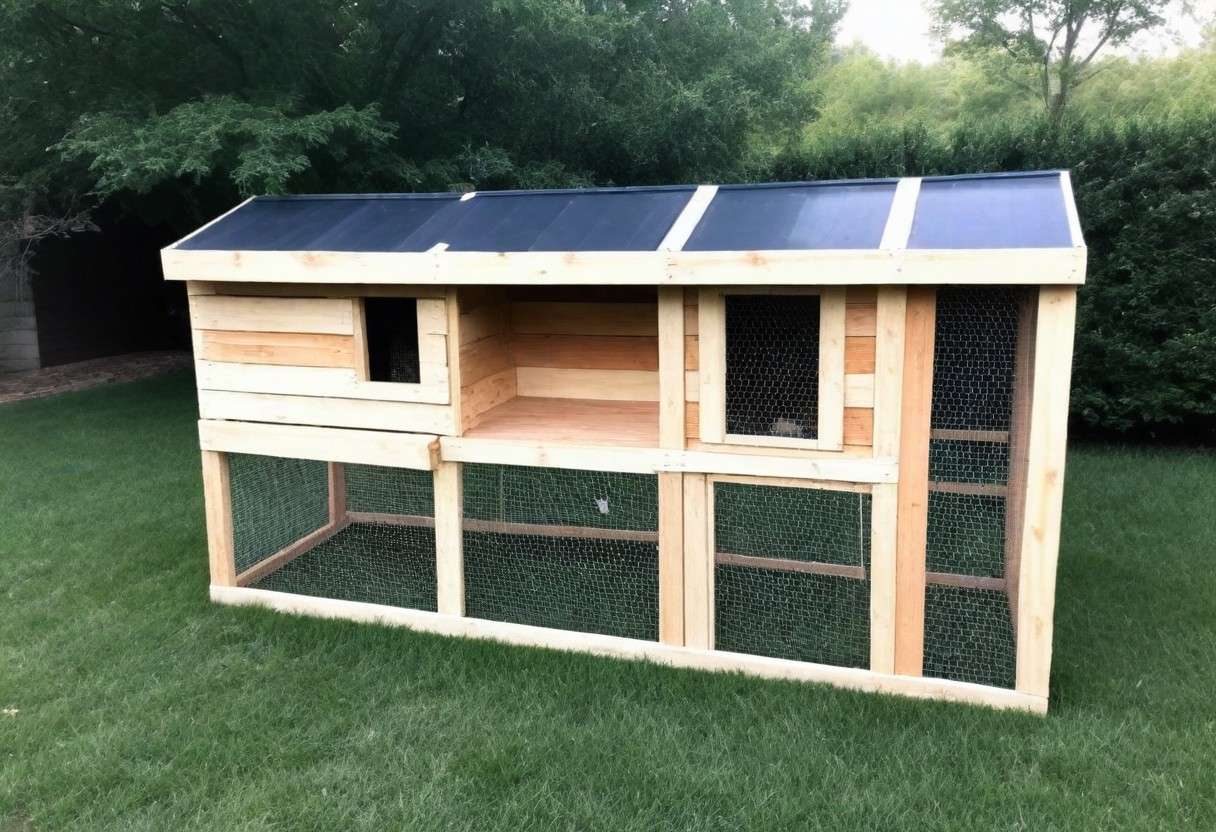
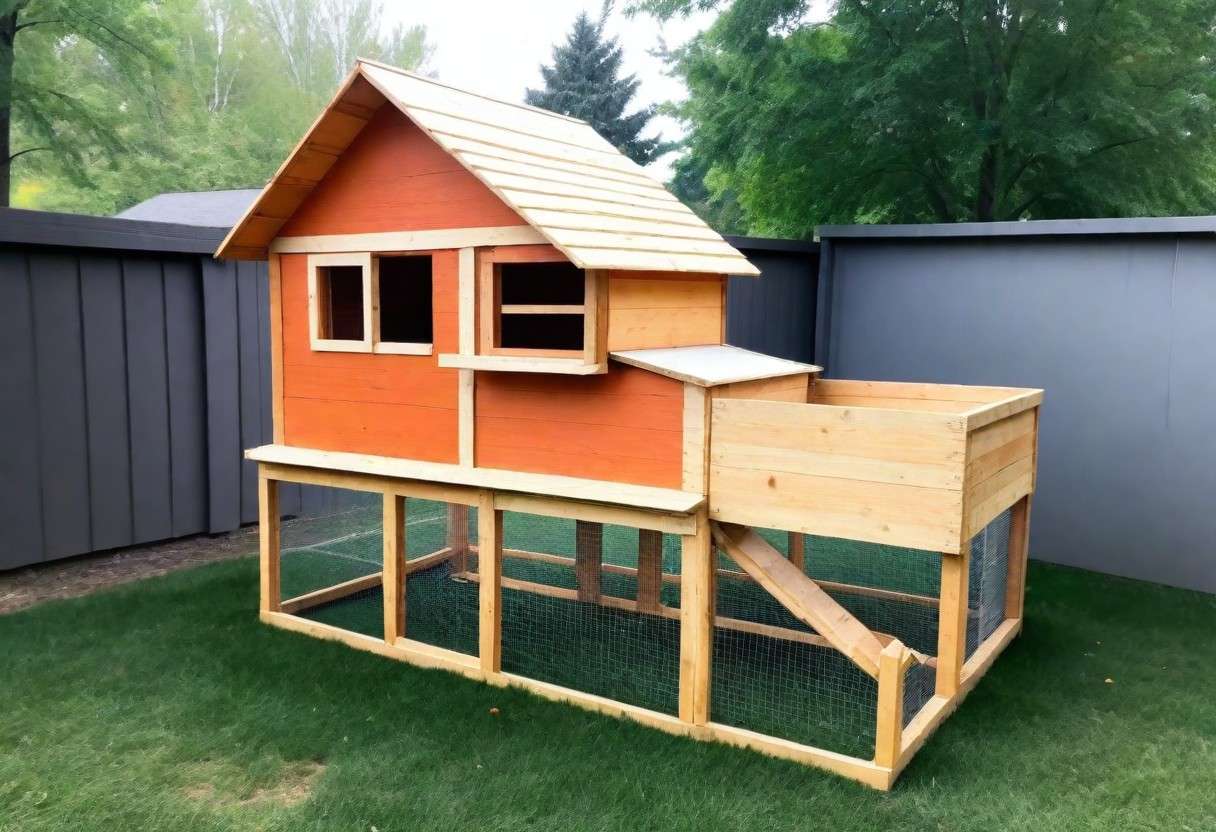
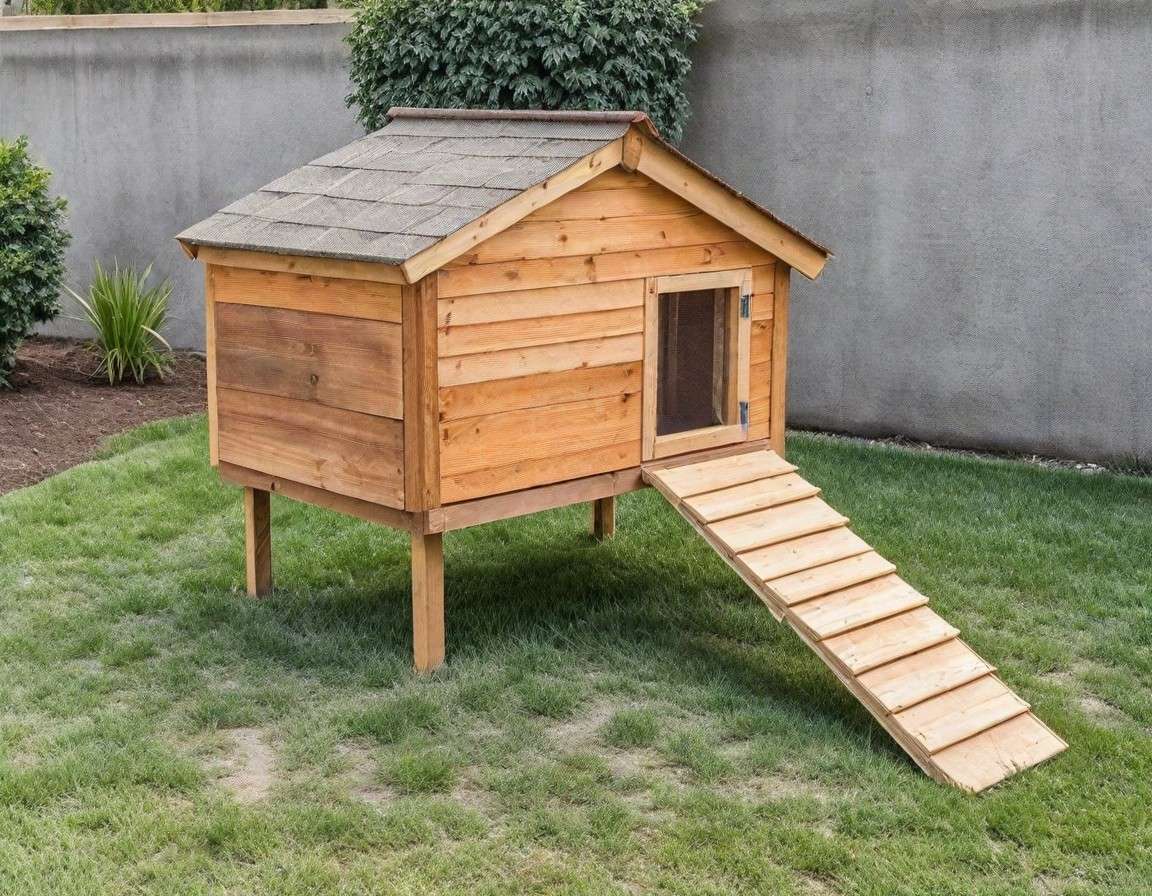
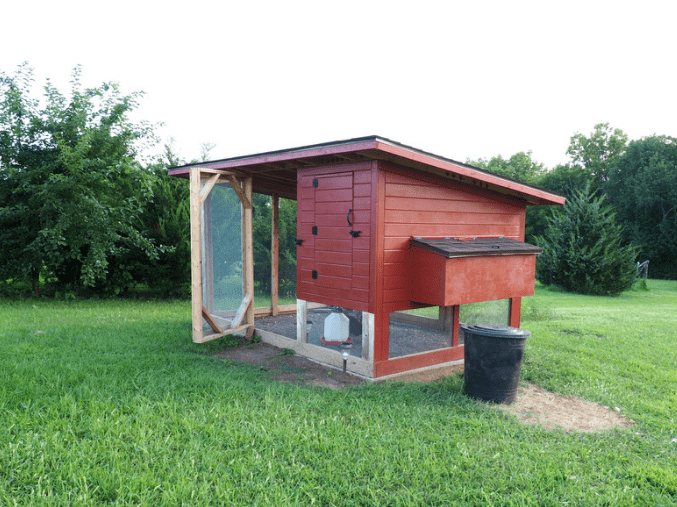
6. The A-Frame Adventure
A-frame design is very popular due to its simplicity and practicality which is quite necessary those who live in areas with a lot of snowfall or heavy rainfall in spring.
The peaked roof promotes water runoff while still providing generous headroom for your chickens.
Use lightweight, long-lasting materials to build it so you can carry it around.
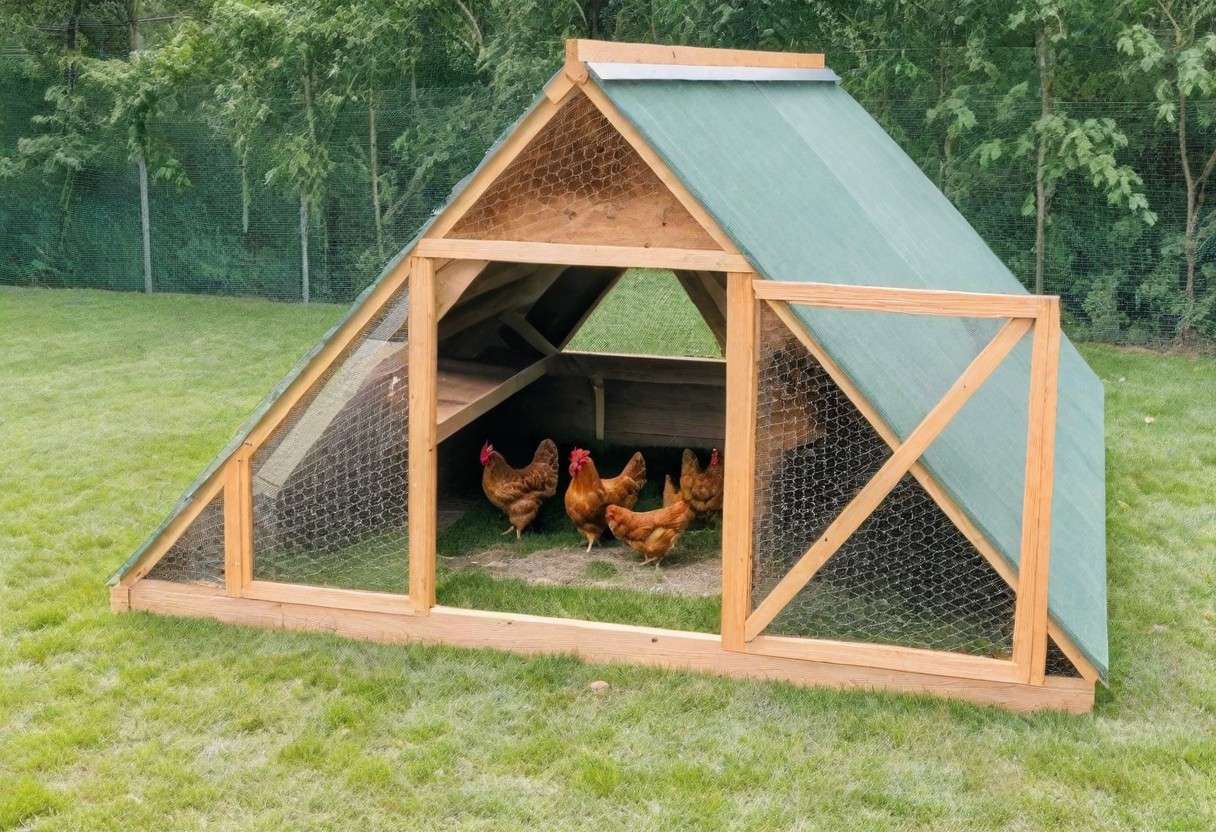
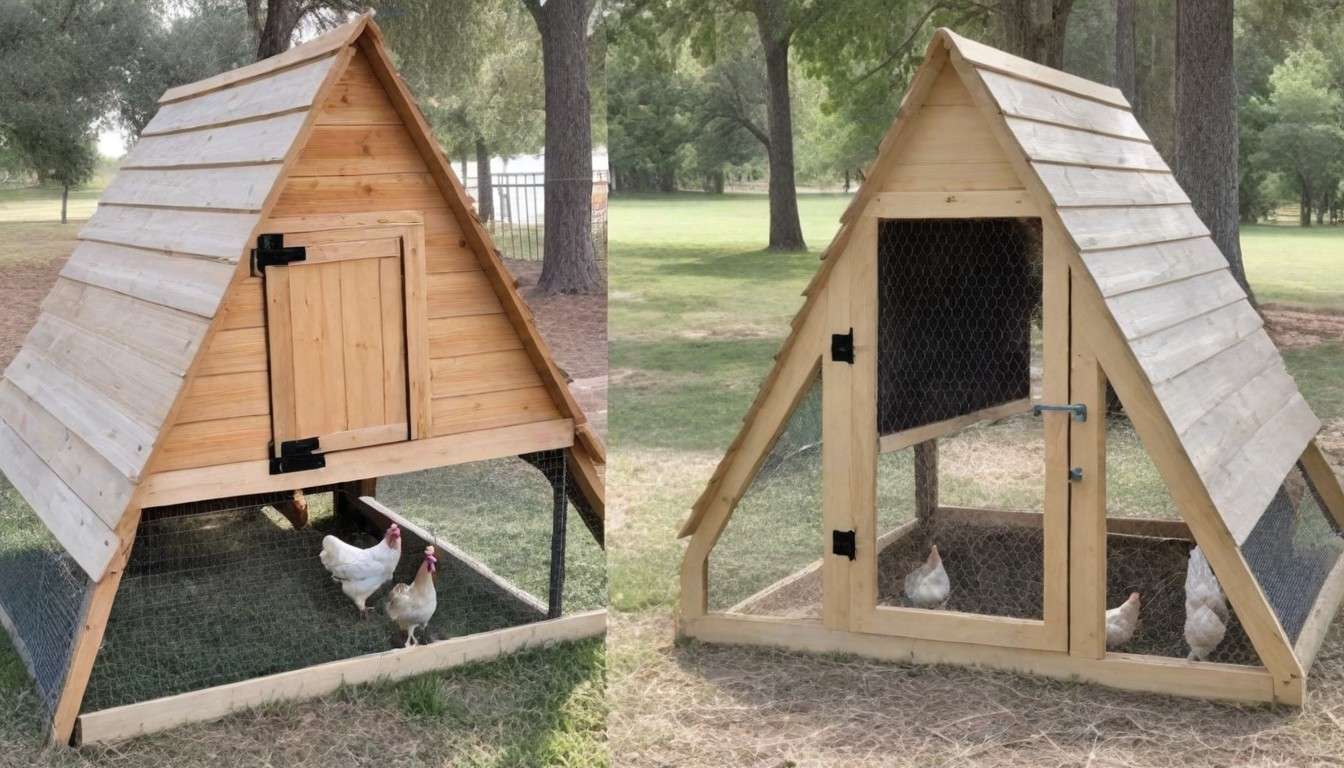
7. The Glass Ceiling Coop
Literally, give your chickens a view of the stars.
You can bathe your coop in natural light by adding polycarbonate roofing panels, or the old-school repurposed skylights. You’ll get warmth as well as (with the right design) light.
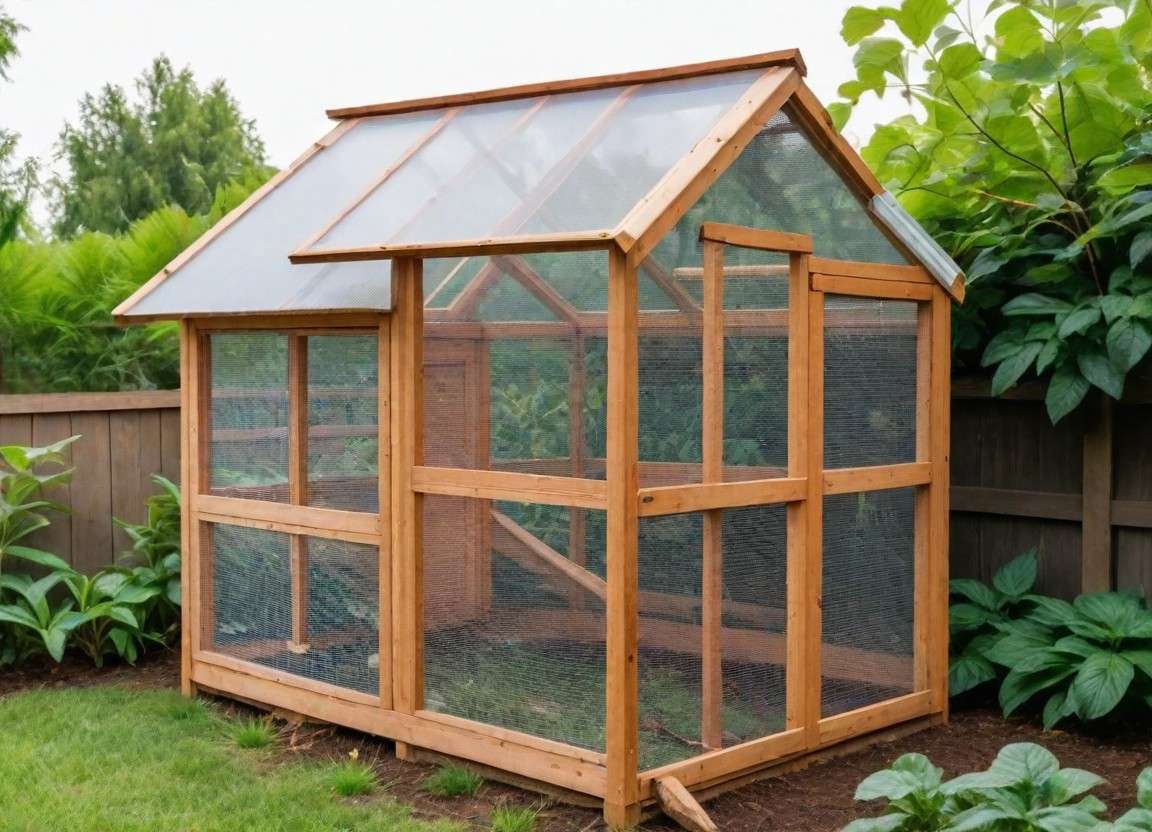
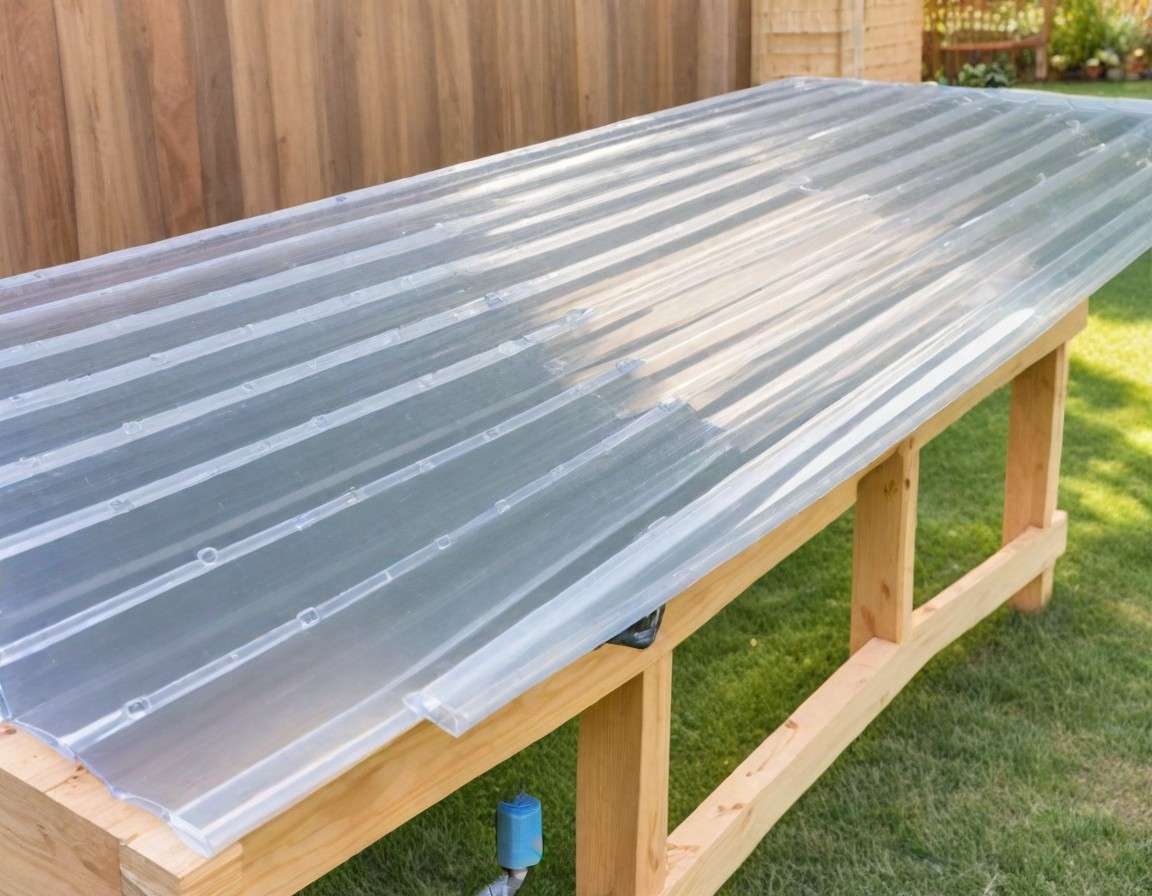
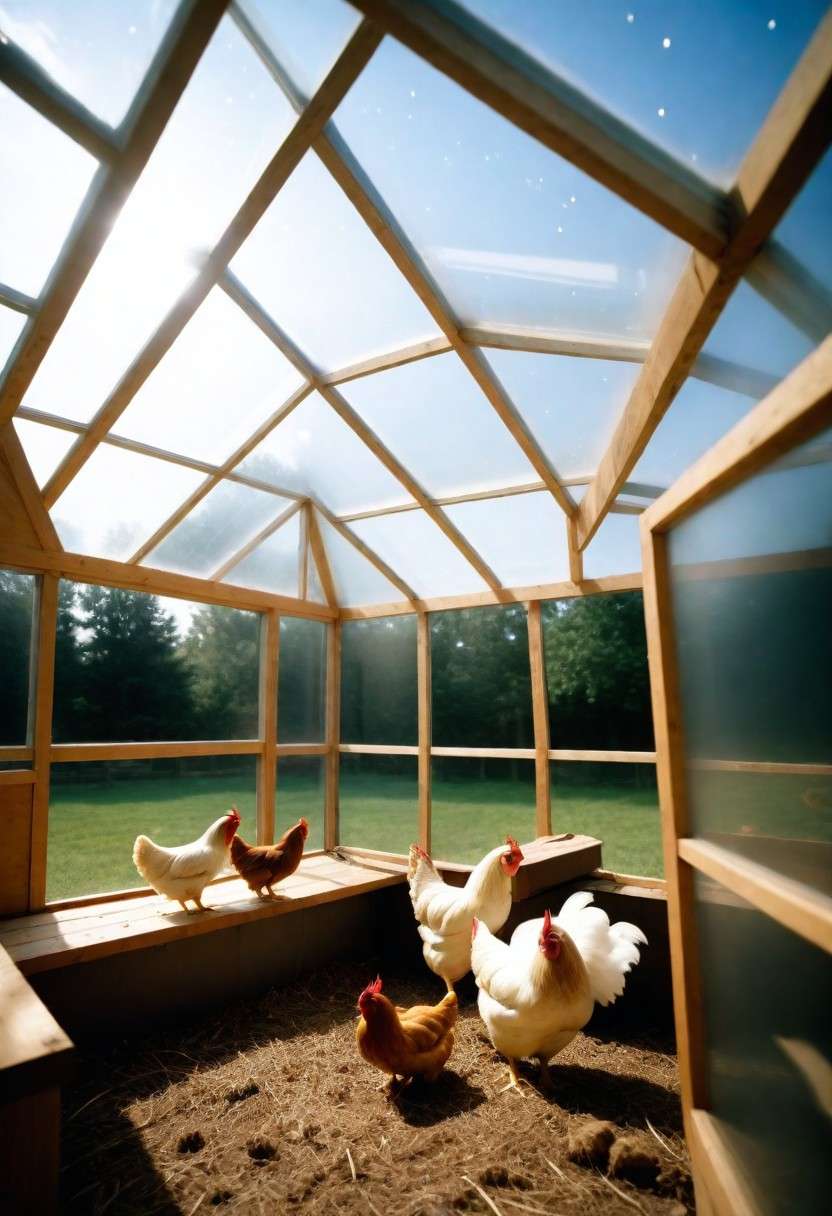
Accessorize and Customize Your Coop
You can personalise an otherwise practical coop into a gorgeous backyard accessory by adding these clever accessories and embellishments:
Ingenious Feeding Solutions
Such DIY gravity-feeders start off easily and cheaply enough and can be made from re-purposed materials, providing your flock with a steady source of food.
Raise them off the ground, out of reach of feed moisture and rodents.
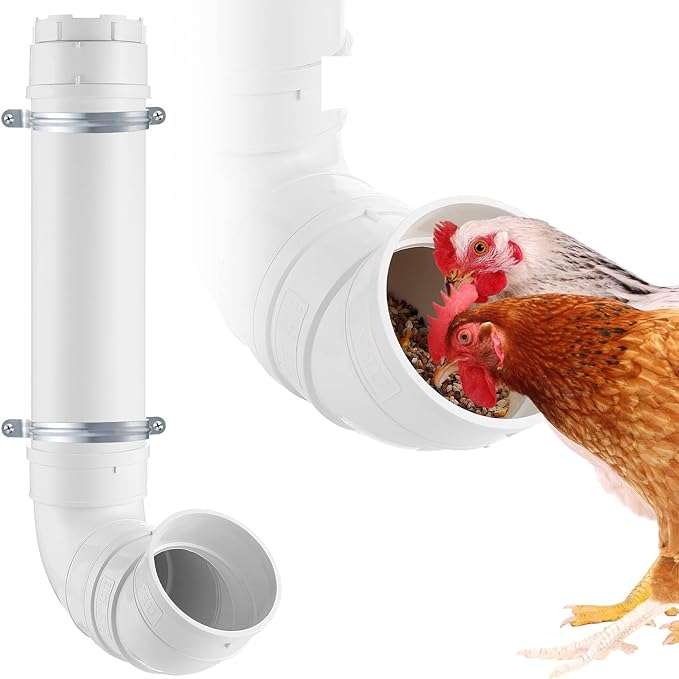
Watering Wonders
If you buy a nipple waterer or a similar vertical water bottle cover design, the height will limit the mess, and you can benefit from a nipple to keep drinking water cleaner for your chickens.
In climates that experience freezing, a solar-powered heater might be wise.
The Power of Plants
Install perennial plants that chickens enjoy around the coop for air-quality benefits and natural enrichment.

Marigolds, lavender, and nasturtiums not only look beautiful but also have pest-repellant properties.
The Art of Egg-cessorizing
Personalize your nesting box and nest boxes with a plaque or painted marker for each hen’s name. Incorporate an art touch in the design of your yard or coop.
Install an announcement system just for every egg that arrives in a celestial theme to mark each egg’s arrival every day!
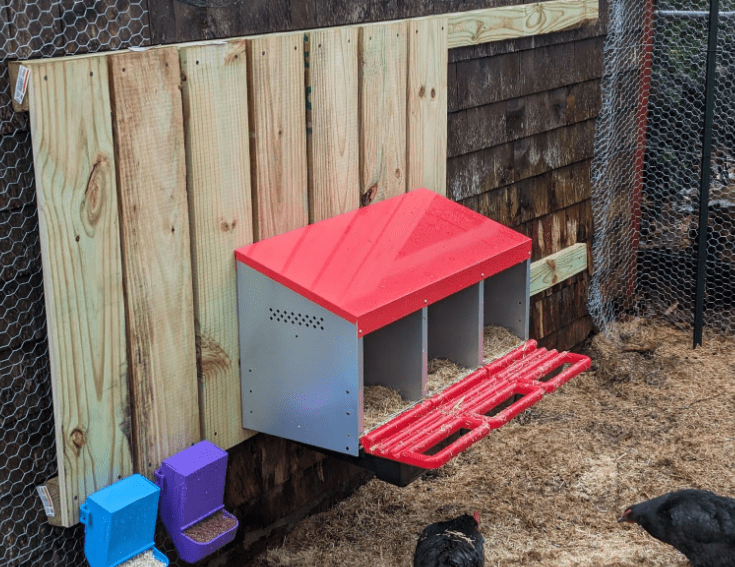
Safety First: Predator-Proofing Your Coop
There is no price on the welfare of your chickens!
Here are some security measures you should include in your coop design:
Double-Walled Fencing
Buried wire mesh can deter diggers, while overhead mesh panels can prevent aerial attacks.

Automatic Closing Systems
Predators and birds are often out hunting at night. A set of automated door systems can help guarantee that your chickens are locked up after dark – even if you forget.
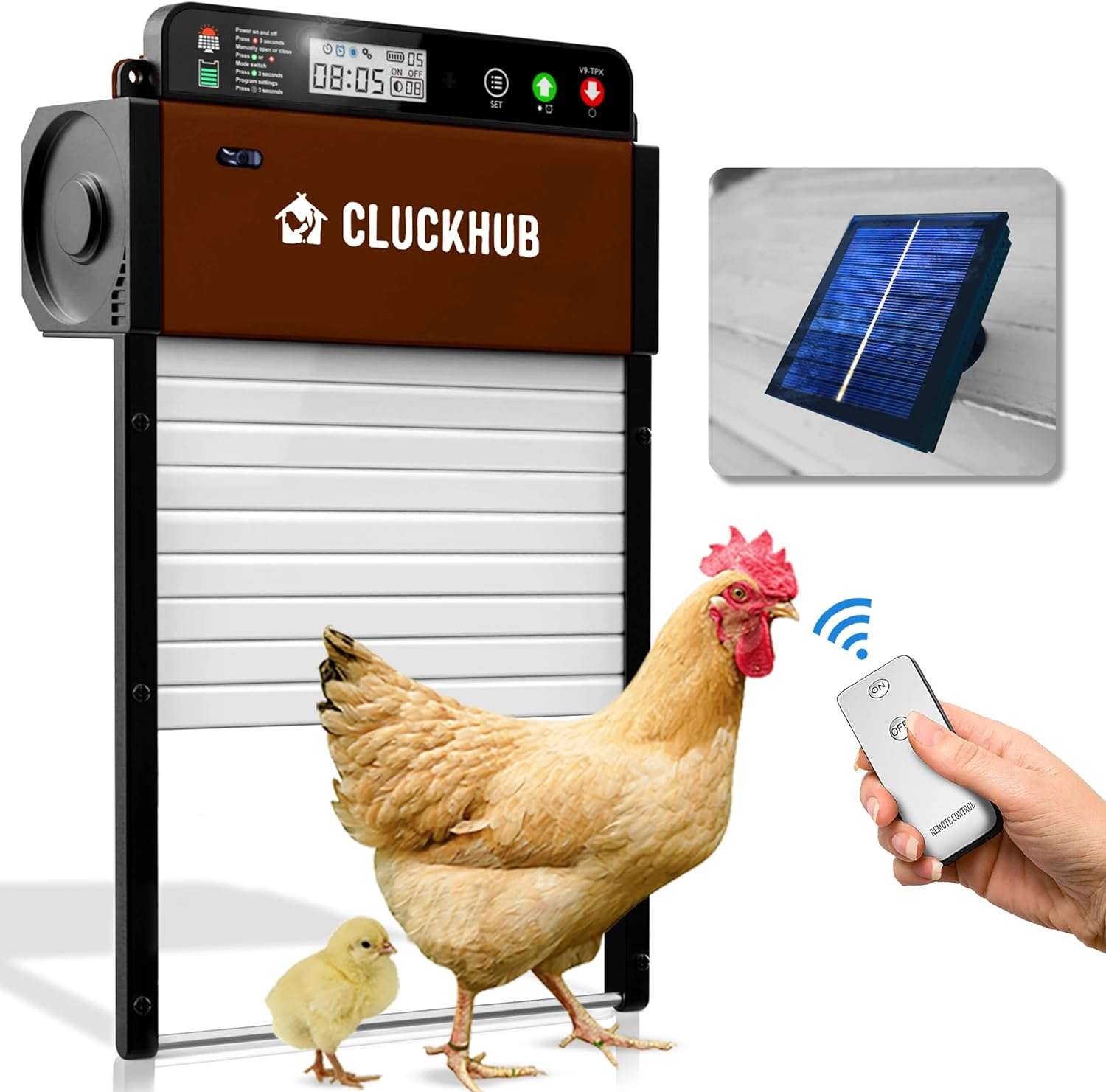
Automatic Chicken Coop Door at Amazon: https://amzn.to/49GZjCp
Secure Coop Construction
Avoid flimsy materials and prioritize the strength of the structure.
Alarms or motion-sensor lighting can add an extra layer of security.
Landscaping for Safety
Thorny bushes planted around the perimeter can discourage predators, as can motion-sensitive sprinklers.

Best Practices and Resources for DIY Chicken Coop Builders
A DIY chicken coop is a fulfilling project – but to do it well, there are some best practices to consider:
Planning Your Build
Take time to plan and design your coop.
Plenty of free chicken coop floor plans are available online; you can use these as the basis for your own coop, or modify them.
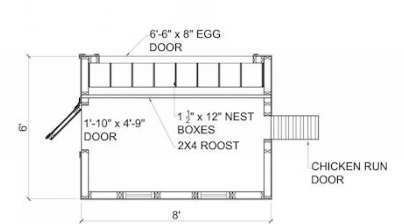
Material Selection
Choose materials that are durable, non-toxic, and easy to clean.
Treated wood can harm chickens, but is fine for raised beds, while untreated wood and galvanised hardware can be trusted and will endure.
Local Regulations
Check with your local council whether you need a permit for constructing a chicken coop, especially in an urban or suburban neighbourhood.
Safety Gear and Tools
Make sure you have the right equipment and safety gear for the job and that your tools are in good working order.
Chicken wire is sharp, gloves and eye protection will be your friend.

DIY Community Support
Find other chicken people, builders and chicken coop forums many centred around friends and families.
The support received from a community, the tips and advice might be invaluable throughout your coop-building phase.
Winter-Proofing Your Coop ❄️
Cold weather presents a different set of challenges for backyard chicken keepers.
Here are some essential considerations for winter coop designs:
The Air-Tight Principle
Although ventilation is necessary all year long, in the wintertime the aim is to provide curée d’air – that is, air exchange without drafts. Design your to achieve a curée d’air throughout.
The Air-Tight Principle
While ventilation is always important, in winter, it is draft-free air exchange that is key.
Build your coop so that the ventilation openings can be closed completely in the depth of winter or kept cracked on cold but mild days.
Frost-Free Water
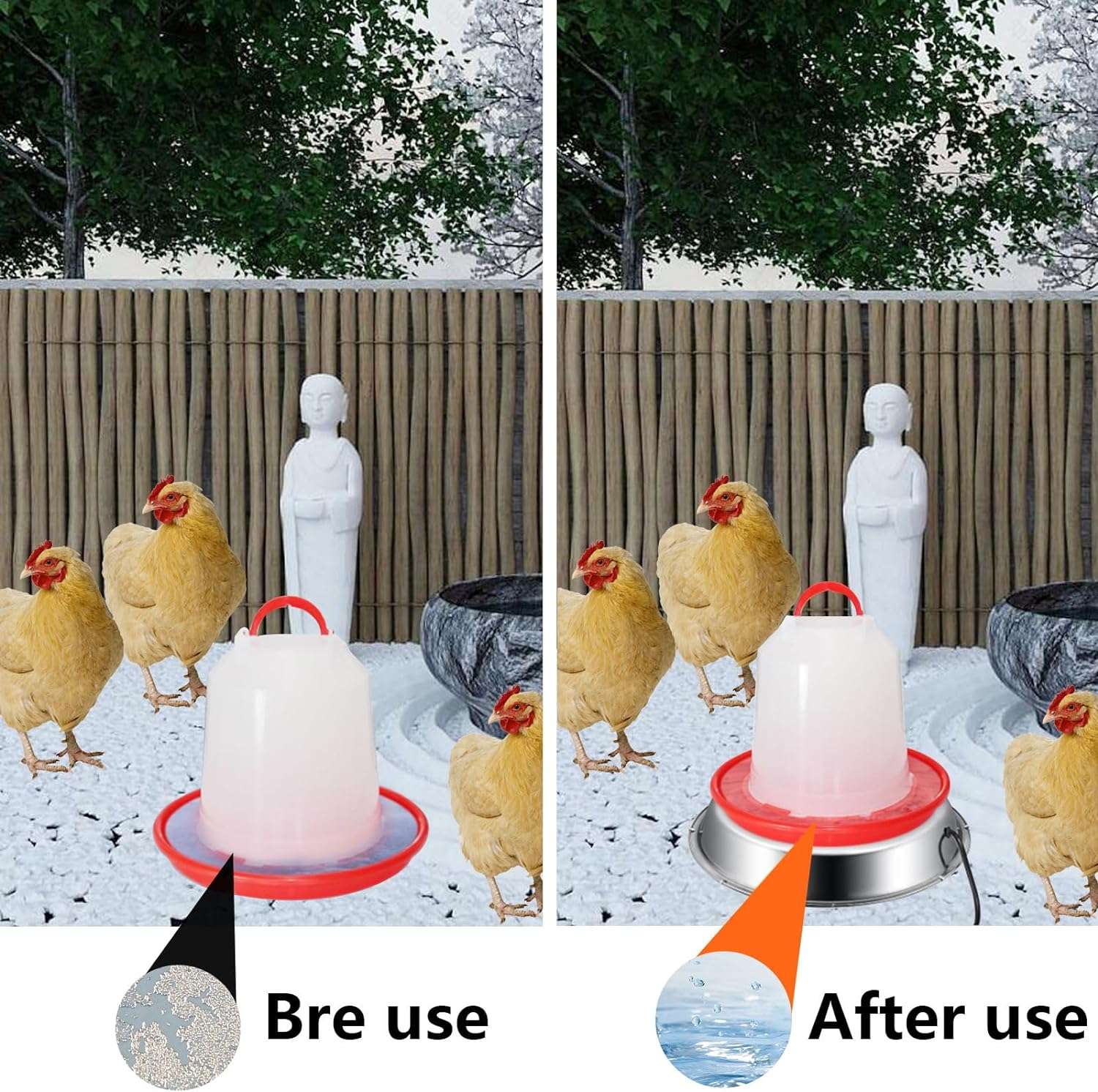
Have an electric-heated water system to avoid frozen water lines. Heated water gallons or in-floor heating can make a big difference in winter chicken keeping.
Cozy Coop Furnishings
Make sure your coop has plenty of ventilation (holes), and fill it with straw, dirt or wood shavings for nesting and, if you can, heat lamps (secured and monitored carefully).
Gather the flock together more closely by incorporating communal perches or cozy corners.

Efficiency and Sustainability in Chicken Coop Design
There is a natural synergy between homesteading and a commitment to sustainability: here’s how you can ensure your chicken coop design is green.
Solar Solutions
- Capture the sun as light, heat, and even open and close automatic coop door systems through the use of solar panels. Solar is cheaper and more efficient than ever, an ethical source of energy for your coop.
Natural Insulation
- You could use straw bales or used denim insulation, which is eco-sound, conserves heat in winter and stays cool in summer. By retaining heat, the coop will also increase the lifespan of your flock.
The happier the bird, the better the egg quality, not to mention the longer lifespan and less chance of disease.
Composting Contraptions
- Have your coop be designed with a composting function: basically, put all the chicken poops and bedding inside, and periodically turn it to make delicious, natural compost for your garden.
Closing the loop on your backyard ecosystem.
Rainwater Harvesting
Have gutters and a rain barrel installed next to the coop to collect water for gardening and, if you like, for your chickens. This will cut down on waste and municipal water usage
The Fundamentals of Crafting the Ideal Chicken Coop
You have to build up from the ground floor before you begin constructing the Taj Mahal of chicken coops.
A successful chicken coop must fulfill the following functions:
- Prey Avoidance: How much of your flock’s life do they have to spend hiding or running from aerial and terrestrial predators? There are many things to think about when it comes to keeping a backyard flock, but being predator-proof then becomes your number one objective. Can you use sturdy-enough material to build your coop – and how are you going to ensure the coop’s fencing or run is secure, so you have a closed circle of thinking with your latches?
- Ventilation and light: Natural light and airflow can keep your chickens from illness. Provide windows with some mesh or an adjustable opening.
- Easy Cleaning: Keeping your flock healthy means making it easy for you to keep your coop sanitary. Make sure your coop has removable nesting boxes, as well as access to the coop floors.
- Roosting Space: Chickens need a place to roost and sleep. The space requirement is at least 8 inches of roost length per bird.
- Nesting Areas: Hens lay eggs in quiet, dark spaces, so plan to provide nest boxes that are easy to access and easy to get away from.
- Feeding and Watering: Feed and water stations should be readily available and weatherproof.
- Plenty of Room and No Loneliness: It’s fun to believe the joke about ‘cow math’, that the number of cows you possess tends to increase, but be sure to give your chickens at least 2-3 square feet per bird in the coop and at least 8-10 square feet in the run.
Frequently Asked Questions
Is It Cheaper to Buy or Build a Chicken Coop?
Considering Cost-Effectiveness
When faced with a choice between buying a chicken coop or building one himself, a person has to decide on a coop according to a number of circumstances:
- Go Premade: Get a ready-made coop If you want to work smart and get your poultry project up and running fast, a ready-made coop is a great option. It can cut your set-up time down to less than two weeks. And if you don’t want to spend several weekends building something, and you’re worried about eggs with dirty feathers and droppings, then getting a ready-made coop ensures the quality of your eggs and helps you work smart and fast.
- Budget: the DIY route, especially if you can scavenge parts from reclaimed materials, is comparatively cheap, while a coop you build yourself, although something of a labour of love, will set you back a fraction of what a comparable factory-produced unit will cost. And it’s tailor-made.
- Skills/time factor: DIYers need to be skilled in putting up a coop, and must have time to devote to the task. For someone lacking either skill or time, shelling out more money may be worth it for a ready-made coop.
- 1. Materials: Depending on the building materials used, it can cost less to build (especially if recycled or repurposed materials are acquired).
- 2. Convenience vs. Customization: Pre-made coops offer convenience, while DIY projects allow for customization.
- 3. Time: How much time will you need to invest in building something versus buying it?
Revamping an old shed might serve as a cost-efficient idea for a DIY chicken coop, but others might think it easier to buy a pre-made coop, despite the opportunities to save money.
Indeed, it makes a lot of sense to redo an old shed or something similar if one has the time and patience to do it themselves.
Pre-Made Metal Chicken Coop:
Buy in Amazon – https://amzn.to/49wOToV
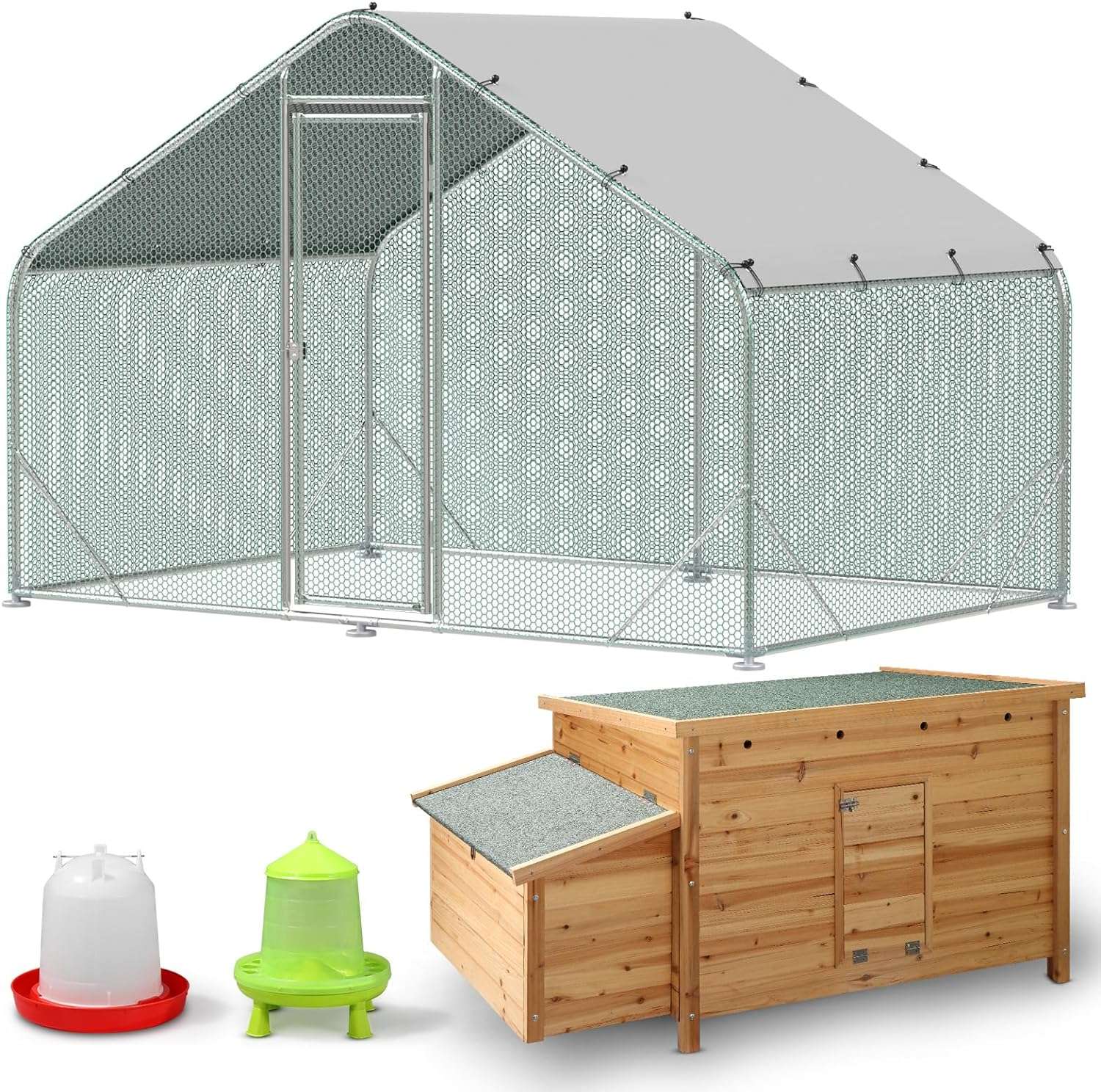
Chicken Coop Mobile:
Buy in Amazon – https://amzn.to/4cUcOBM
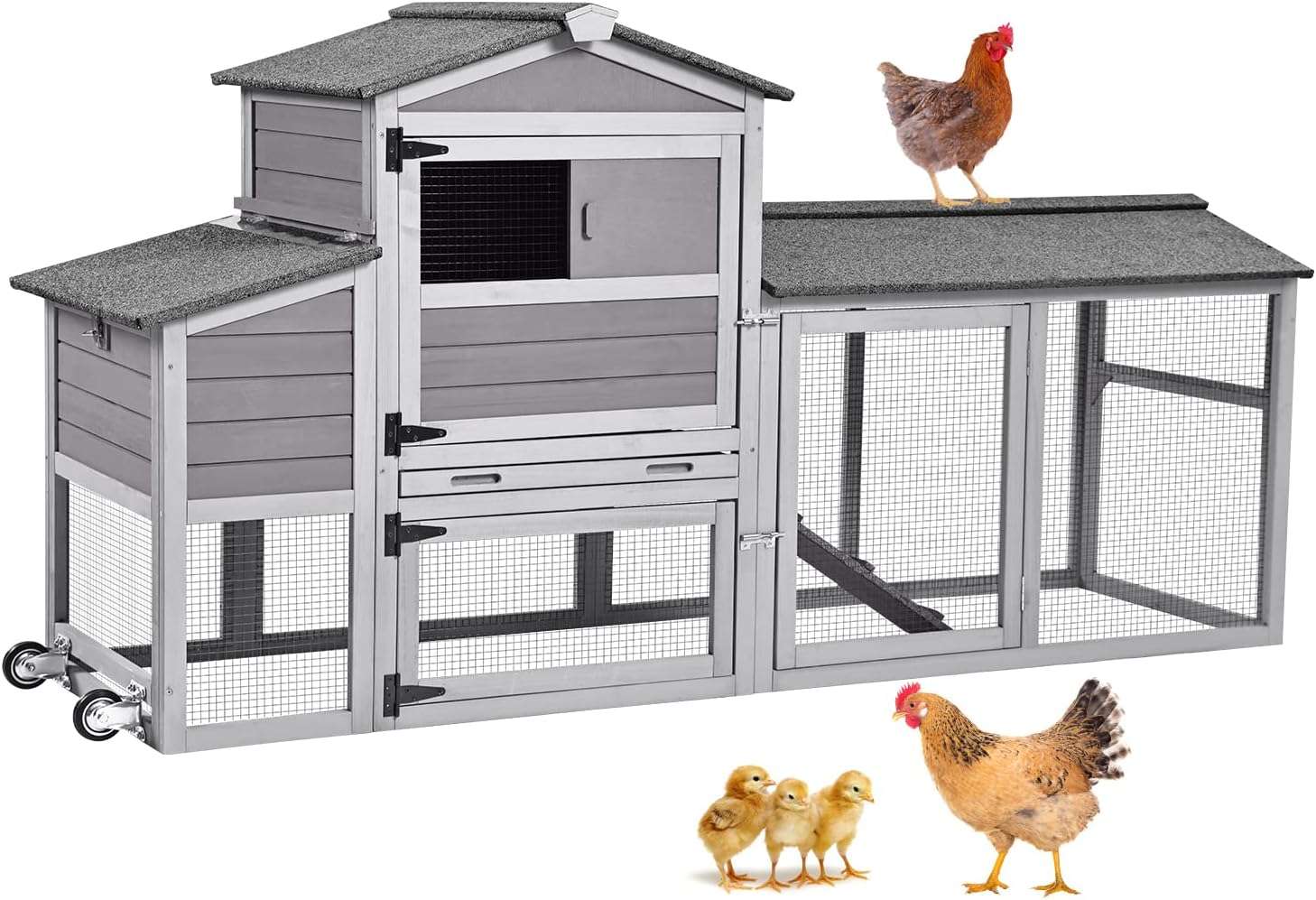
Should Chicken Coops Be on Grass or Concrete?
Grass
- Natural environment: The chickens have access to grass where they can rummage for their next meal which can increase their wellbeing and nutrition.
- Maintenance: But it needs regular maintenance to ensure it doesn’t become muddy, which can hurt chicken health.
Concrete
- Durable and Easily Cleaned: Concrete floors are durable and easily cleaned, which helps keep the coop sanitised
- Lack of Foraging: One negative aspect of concrete is that chickens cannot dig or scratch for food as they naturally would, and may require additional feed.
Choosing whether to put a chicken coop on top of grass or concrete involves considering the pros and cons of maintenance, climate, and chicken welfare.
The choice involves trade-offs to best suit both chickens and their caretakers.
How Big of a Coop Do I Need for 6 Chickens?
Inside the Coop
For a healthy and comfortable living environment inside the coop:
- At least 2-3 square feet per chicken is recommended.
- This means that for 6 chickens the coop space is 12-18 sq ft.
Outside in the Run
For adequate outdoor space in the run:
- Each chicken should have 8-10 square feet.
- For 6 chickens, this amounts to 48-60 square feet in the run.
Putting these criteria together, we can estimate that the best coop dimensions, for 6 chickens, are as follows: 12-18 square feet for the coop (house with nest boxes) plus an additional 48-60 square feet at least for a run or sheltered area outside.
Disadvantages of Raising Backyard Chickens
- Chickens make noise and their coops smell Movies should reflect the reality of raising backyard chickens: it can be noisy, and their coops can smell if they’re not cleaned out regularly.
- Predators: Chickens can lure predators such as foxes and coons into your backyard, putting you on a constant lookout.
- Time: It takes time to raise and maintain healthy, safe chickens.
- Money: It costs time and money to buy feed, maintain the coop, and get veterinarian care.
Advantages of Raising Backyard Chickens
Raising backyard chickens comes with several notable benefits:
- Fresh Eggs: Most importantly, you have a source of fresh, nutritious eggs, eggs that are often more nutrient-rich than those in the store.
- Pest Control: the chickens keep the pests away by eating insects, weeds and any left-overs from us. She’s right! It’s much more time-consuming to weed when you don’t have anything to eat the weeds in their baby stage.
- Weed and Pest Free: the chickens eat a lot. They eat bugs and weeds and leftover food scraps. Chicken-manure fertiliser: A most excellent organic fertiliser, rich in nitrogen, potassium and phosphorus, it improves garden soil health.
- Educational value: Learning about keeping chickens can be an educational experience for families. Children could learn how to be responsible for something and where their food comes from, but it’s also teaching the care and importance of animals.
- Points in favour of sustainability: Raising chickens is a sustainable lifestyle choice because it contributes to reducing your food miles for eggs and meat, you become less dependent on processed foods, and it encourages the cycle of food production and wastes.

These advantages bringing the rewards of backyard chicken-keeping to the surface, allowing the work to be offset by measurable daily benefits.
What to Put in the Bottom of a Chicken Pen?
When choosing a material for the bottom of your chicken pen, keep health and cleanliness in mind.

- Straw or Hay: Prevents the animals from getting cold, but needs to be changed often otherwise mold and pests can form.
- Sand: Drain well, easy to clean make it a fan favorite for many chicken ranchers.
- Wood Shavings: Absorbent and cushioning so great for odour control, but avoid cedar, which is dangerous for chickens!
Your choice of material will come down to how much you want to maintain, the climate where you live, and what is best for the chickens.
No matter the space (or the DIY skills of the caretaker), these ideas are a repertoire for building a coop that not only embodies your personal aesthetic, but also embodies your love of style and a love for fowl.
Keep these three things – comfort, safety and function – as the most important needs for your chickens, and you’ll likely come away with an attractive coop that will serve you and your birds well for years to come.
We want to be upfront about something: some links on our website are affiliate links. This means if you make a purchase, we might earn a commission at no extra cost to you. These commissions are vital as they help us keep creating valuable content and maintain our site.

